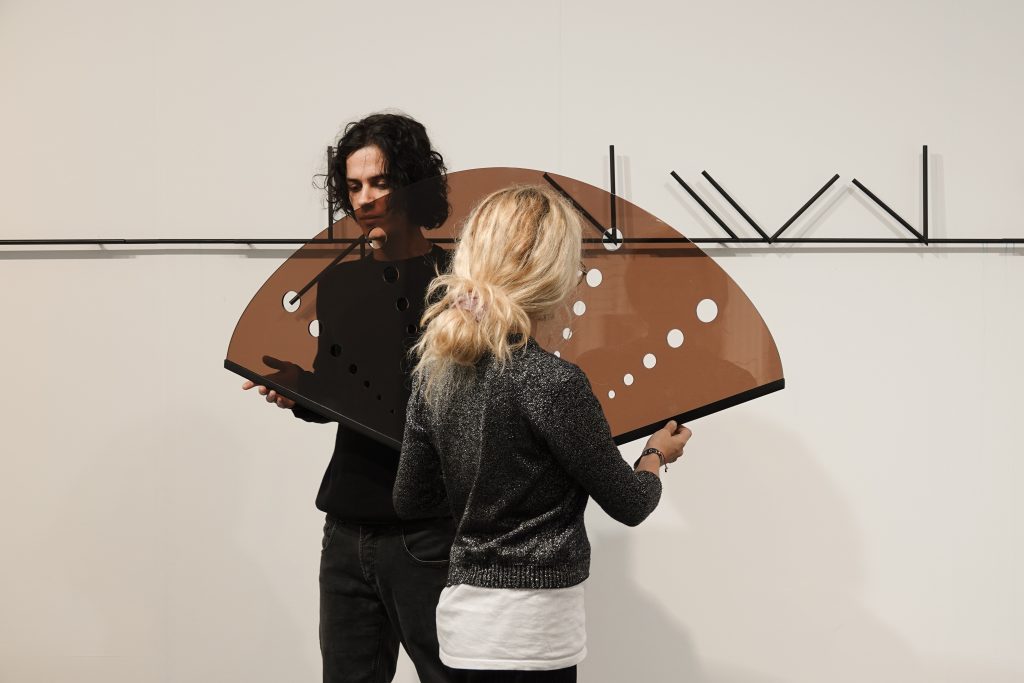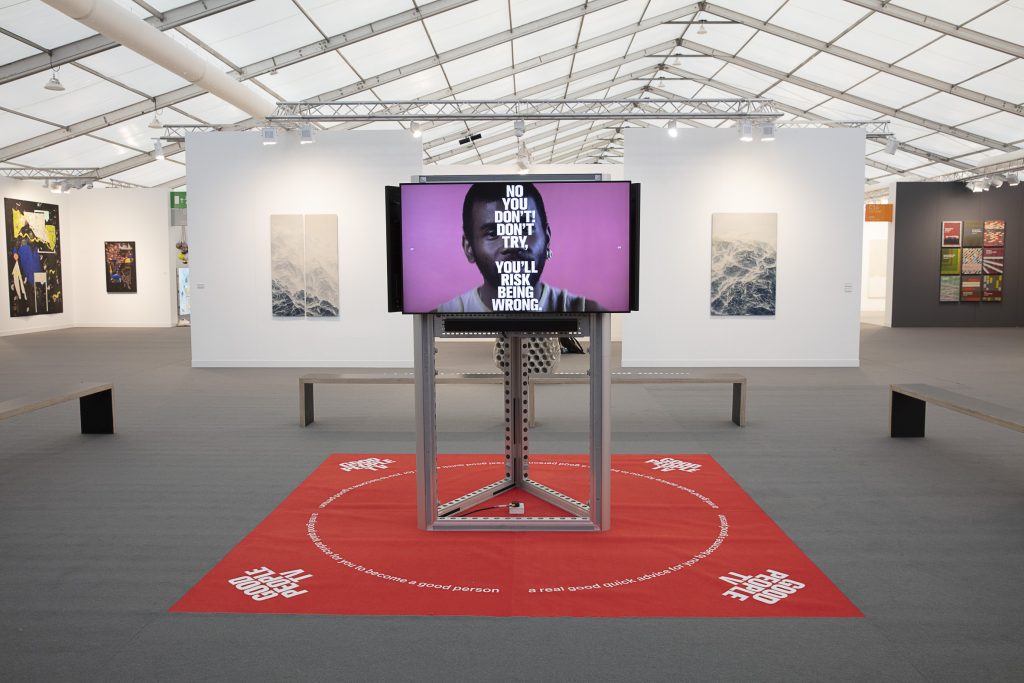Art Fairs
Frieze London’s Newest Section Seeks to ‘Deconstruct the World as We Know It.’ There’s Good Art There, Too
It's just one element that helps the fair feel more engaged with the outside world.

It's just one element that helps the fair feel more engaged with the outside world.

Kate Brown

“There is nothing worse than being wrong,” states a video by Ndayé Kouagou included in Frieze London’s newest section, “Unworlding.” The work, Good People TV (2020), is on view alongside a sharp selection of work by 13 artists presented by 10 young and midsize galleries that seeks to deconstruct the world as we know it.
That’s a tall order for a display at an art fair, where commerce is the name of the game. But “Unworlding” offers a surprising engagement with the outside world and conceptual art. Curated by Cédric Fauq, chief curator of CAPC musée d’art contemporain de Bordeaux, the section provides a highly refined and nuanced approach to some of the most pressing topics of the day, including social justice, disenfranchisement, and unlearning—subjects that are often more likely to be addressed in the fair’s conversation program than the art on view.
The presentation, which gave prominent space to emerging talents and first-time exhibitors, helped make this year’s event feel less hermetically sealed off than many art fairs do. Elsewhere, the climate-focused Gallery Climate Coalition presented a booth stacked with sustainability-themed programming.
“It’s been so rewarding to see people engage with the works,” said Fauq, who previously worked at Nottingham Contemporary and the Palais de Tokyo before heading to CAPC in September.
One highlight was a series of large-scale light boxes by the Amsterdam-based artist Nora Turato, her first foray into the medium, presented by Galerie Gregor Staiger. They draw on the banal but omnipresent ads seen in airports for wealth management funds or insurance companies, the artist told Artnet News. One seems to consider the vapid nature of a commercial fair, stating “a limited supply of nothing.”

Ndayé Kouagou. Courtesy of the artist and Nir Altman, Munich. Photographer: Andrea Rossetti.
Despite its conceptual rigor and decentralized approach on a bustling VIP day when people are easily distracted, the section found an eager audience—and in some cases, willing buyers.
“There are a lot of international collectors we didn’t see in Basel are here,” said Laurie Rojas of HUA International, which presented works and a performance by Fanny Gicquel where the French artist activated the various pieces in a gentle choreography. By late afternoon of VIP day, the gallery had sold two works to two collectors, one Greek and one German, for between £1,700 and £6,800 ($2,321 to $9,287).
Nir Altman presented two works in the Unworlding section, including glowing concrete sculptures by Susi Gelb and the other by Kouagou (prices range from €7,000 to €14,000), both of which were hand-picked by Fauq. “There is a lot of interest in both artists’ works and we already made some sales,” Altman said.
For the first time, the Gallery Climate Coalition, founded by a cohort of London dealers last year to lobby for sustainability in the art industry, also has a booth at the fair. “Recruiters” are on site helping VIPs better understand the aims of the nonprofit and what kinds of tools are available to help reduce one’s carbon footprint. (While dealers may be in their booths, collectors, museums, and artists can join the GCC as patrons.)
“After almost one full year since launch of GCC, it’s fantastic to have a physical presence and to be engaging firsthand with galleries and collectors,” said the coalition’s Aoife Fannin. The booth had four QR codes on the wall that led visitors to learn more about its major areas of focus: energy, shipping, travel, and its carbon calculator.
The booth, which was given prime and normally costly real estate on the fair floor for free, is hosting talks throughout the week as well as a work by German photographer Wolfgang Tillmans. (The artist donated it with his gallery, Maureen Paley, who happens to have her booth right next door and who is also a GCC member.) The work, which was on sale for $95,000, shows a broken tree captured in the aftermath of a hurricane in Germany. It sold quickly on preview day to an undisclosed buyer who, presumably, will find a sustainable way to ship it back home.
Frieze is open at Regent’s Park in London from October 13 to 17.